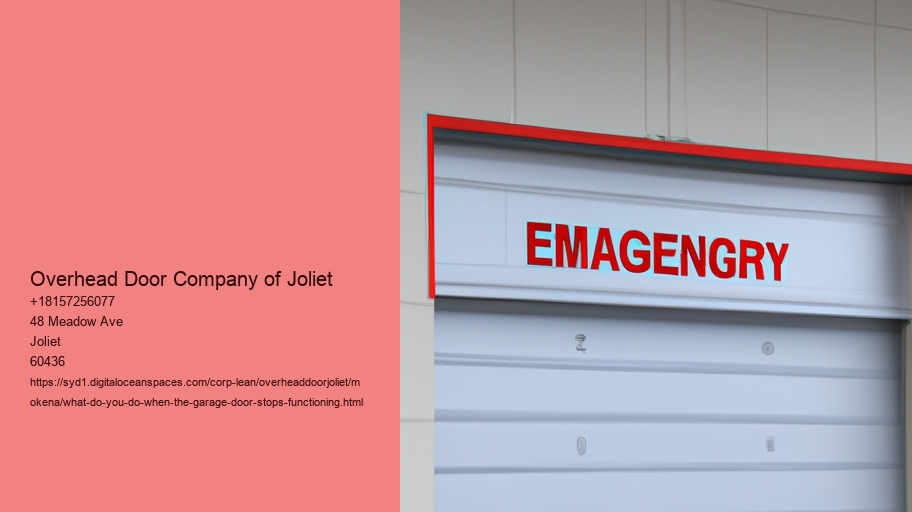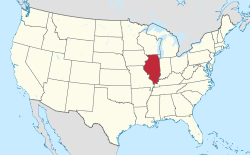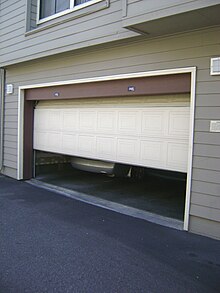Determine the Garage's Type Door and Opener
It is essential to understand the garage opener and door that you have before you begin troubleshooting. What is the #1 Thing You Need to Do When Your Garage Door Suddenly Stops Working? .
Garage doors are generally classified into several types based on their appearance and operation.The most popular varieties are roll-up, sectional and tilt-up doors.Sectional doorways are constructed from panels that are joined by hinges, which allow the door to bend when it opens and closes on the vertical track.Roll-up doors, commonly found in commercial areas made from slats that roll up into a coil.
The tilt-up door, on contrary, is a solid, single piece that opens by tilting outward and upward.Belt drive garage door openers are quieter but they use a rubber band instead of chain. They're a fantastic choice for attached garages. Garage door openers with screw-drive employ a rod with a threaded steel to move the garage door. This is the ideal combination of noise and cost.
Once you've identified your garage door and opener type The next step is to carry out the basic test for common issues.Ensure that the power source is connected to the opener by examining the outlet and breaker.Inspect the manual release cord to be sure that it's not pulled, which will disconnect the door from the opener.Examine the tracks of the door and rollers for any obstructions or damaged areas and clean any obstructions.
Lubricate moving parts when needed, as lack of lubrication can result in jamming, sticking or even squeezing.Resetting your opener will resolve any electronic faults. Refer to the instruction manual of the opener you're using to learn the exact steps. Some openers can be reset with a push of an icon, while other require that the unit not be plugged in and then re-plugged.
Spring tension is too high and could be dangerous to repair them without the proper tools.
When the garage door stops working and you are unable to open it, you must consult an expert.
Check for obstructions or debris
It's not easy and perplexing when your garage door doesn't work abruptly, particularly if you utilize it regularly.
This easy, yet effective method can be used to pinpoint the problem, and restore the functionality of your garage.Even a tiny obstruction can prevent your garage door from working properly.
Start by inspecting the tracks on both the right and left sides of the door. Examine for obvious obstructions, or debris accumulation. If you notice something unusual, like a twig, or a rock stuck within the track. Get it removed with care.
The issue may not always be apparent. To check whether the issue remains present, move your fingers along the track. Also, make sure that the tracks are aligned. This is because misalignment could result in the door jam.After that, check the rollers and hinges.These parts should move freely without resistance.If they're sloppy or stuck, it might be an indication of accumulated dirt or rust.In such cases cleaning and lubricating them is often a solution to the issue.Use a gentle cloth or brush to wash away any dirt, and apply a lubricant that is suitable to ensure smooth movement.
It's also important to check the area surrounding the door itself.Sometimes items that are stored in the garage could accidentally move or fall, blocking the route of the door.Ensure that the space is free of obstructions and there's nothing that is hindering the door's movement.
Make sure the sensors are working if the door does not open after you have removed any obstructions.
The sensors on modern garage doors could malfunction in the event that they're dirty or not aligned properly.By maintaining a clean path and by avoiding obstructions, you'll stay clear of having to call a professional fix a problem that is typically simple.
Examine the wall switch and remote control
It's crucial to examine the wall switch and remote control.
Checking these components can help you avoid costly mistakes.First, consider the remote control.This handheld device is your primary tool for operating the garage door without direct physical interaction.Over time, remote controls can experience issues such as drained batteries, signal interference, or even internal damage.Start by replacing the batteries with new ones.It might seem simple, but dead batteries are a common reason for a garage door not responding.If the problem persists after replacing the batteries, try reprogramming the remote according to the manufacturer's instructions.Additionally, ensure that the remote is within the recommended range and that there are no obstructions blocking the signal.
Next, you should pay attention towards the wall switch. It is also a important component of the garage door's mechanism.
If you're comfortable and comfortable, you can open the switch to look for damaged or disconnected wires.In some instances, the the wall switch may be working, yet the door remains unresponsive.This could suggest an issue with the garage door opener unit itself or with other components like sensors or door tracks.However, starting with the remote control and wall switch is the logical first step.
It lets you identify these common problems prior to moving on to more complex troubleshooting measures.In conclusion, inspecting the remote control and wall switch when your garage door suddenly stops working is a straightforward and efficient approach.By checking these parts first, you will be able to quickly identify if the issue is within these easily accessible parts or if further investigation is needed.This initial examination does not only cut down on time, but also gives security knowing that you've taken all the necessary steps to diagnose the issue correctly.
Manually Test the Door Balance
If the garage door stops functioning, it can be both annoying and inconvenient.The garage door is an essential part of your home, providing security, protection from elements, and ease of access to your vehicle as well as storage space.
The first step you must make when confronted by a malfunctioning garage door is to examine the door balance.This simple yet effective procedure will allow you to identify any potential issues and stop further damage from occurring to the door or its components.Balance of the garage door is critical to its correct operation. Unbalanced doors can cause more serious problems which include misalignment and broken springs.
Start by disengaging the garage door opener.
The majority of garage doors come with a release device that is found on the red cord or the handle. After the door has been unplugged from the motor, you can lift the door to waist height and then release it. A properly balanced door will stay in place and move slowly.It is recommended that you contact an expert who can help you adjust the springs to ensure that the garage door is in a balanced state. This will not only resolve the issue but will also extend the lifespan and reliability of your system.
The manual testing of the door balance is an important first step if your garage door suddenly stops functioning.
In addressing problems quickly and comprehending the importance, you can ensure that your garage door will operate smoothly and safely in the future.Tracks and Rollers
This quick check can help you save money and time if your garage door is not working.
The tracks and rollers in the garage's operating system are vital. The tracks comprise metal rails that control the door when it opens. The rollers are the ones that move on the tracks.
As time passes, these components may become dirty, misaligned or worn out, leading to operational problems.Begin by visually inspecting the tracks for obstructions.Dust or grime and even tiny pieces of debris can build up within the tracks, which causes the rollers to struggle when they travel through the path.Cleaning the tracks using a damp sponge can usually eliminate these issues.Make sure you dry them thoroughly afterward in order to avoid rust.
Then, check the alignment of the tracks.Tracks should be perfectly straight and parallel to other.If they appear bent or out of alignment, the door could jam.You can gently tap the misaligned portions back into place with a rubber mallet.However should the damage is extensive the best option is to seek out a professional for help to align them properly to ensure safety and function.
Rollers are prone to wear out over time. This is especially true for those made of plastic.
Check for signs of wear and tear such as cracks, or chips.If the rollers appear worn, think about replacing them with new ones.Metal rollers that have ball bearings typically offer better durability and a smoother operation.The use of silicone-based lubricants will reduce friction and wear. Be sure to grease the hinges as well as the springs for ensuring that your garage door is functioning properly.
By ensuring that these components are in good alignment and properly lubricated It is possible to bring back the garage door's complete functionality.
Making the effort to inspect and maintain these parts can also prevent any future issues, extending the life of your garage door's mechanism.
What do you do when the garage door stops functioning? - Illinois
- Illinois
- Republican Party
- museum
Examine for obvious damage or wear
When a garage door suddenly stops functioning, it can be very frustrating and aggravating especially when you're on your way out or trying to make sure your home is safe for evening.While there are a myriad of causes for the problem, one of the most effective and quick steps to take is to examine the door for obvious damage or wear.This first inspection will usually determine the root of the issue, which allows an immediate and effective solution.
Garage doors are complex systems that include springs, rollers tracks, cables, and many other elements. As time passes, the components of the system may become worn-out due to constant use and exposure.
If you conduct a thorough visual inspection, you can identify any obvious signs of damage that may be causing the door to malfunction. Start your inspection with the springs.
What do you do when the garage door stops functioning? - Republican Party
- plant
- trail
- Moraine Valley Community College
Another area to focus on is the door itself.Look for any obvious damage, bends, or warping that might affect the door's balance and alignment.Pay attention to the weather stripping on the bottom of the door, because a damaged strip may prevent the door from sealing correctly.
Make sure that the sensors on the door are also clean and in alignment. A misalignment or dirt build-up could cause the sensors to fail and stop functioning.While a visual inspection can give valuable information, it is essential to consider that some problems might not be immediately apparent.If you do not find any obvious evidence of wear or damage, it might be necessary to talk with a professional to determine and solve the problem.However, by conducting an initial inspection, you can often identify and address minor issues before they turn into expensive and expensive repairs.
This method will not only enable you to identify the issue quicker, but help you take actions to restore the proper functioning of your garage door.
You can extend the lifespan of your garage door simply by taking proactive steps.What do you do when the garage door stops functioning? - Illinois
- flag
- bracket
- warranty
Check the Springs and Cables
When your garage door stops working is both painful and inconvenient.One of the most vital things you should do in this situation is to check the springs as well as cables.These components are integral to the functioning of your garage door, and problems with them are often the cause of a broken door.
Springs play an important part in the functioning of your garage door by providing a balance to its weight.When the door is in motion, the springs bear the bulk of the load allowing the door to open and close smoothly.There generally are two kinds of springs, torsion springs and extension springs.Torsion springs are positioned over the garage door and are twisted to store energy, whereas extension springs are situated on both sides of the door, and are stretched to allow the required force.
As time passes they wear out, break, or loose tension, leading to problems with operation.In the same way, cables are crucial because they work with the springs in order to raise and lower the door.They are generally made of steel, and are made to withstand high tension.However cables can suffer from wear and tear, fray or snap due to the extreme pressure they're under.A broken cable could result in the door becoming unbalanced or even completely inoperative.
If you're not sure whether the cables or springs have to be adjusted, visually look them over. Look for signs of wear or rust.
It's vital to focus on security when it comes to garage door components.
The cables and springs are stretched and may cause serious injuries. If you do not have expertise in garage repair, it's advised to consult a professional. They'll have the tools and experience necessary to safely repair or replace these components. This will ensure that your garage door functions correctly and safely.In conclusion, when your garage door suddenly stops working, assessing the springs and cables is a key step in diagnosing the problem.Understanding their role and potential issues can help you determine whether a simple adjustment is needed or if professional intervention is required.Taking prompt action not only restores functionality but also ensures the safety and longevity of your garage door system.
Think about calling a professional technician
The garage door could suddenly stop functioning and cause you to lose time. It could even put your home at risk.
It may be tempting to pick up the toolbox and try to fix on your own however it is better to call a professional. This option is not just about your security, but provide a long-lasting and more efficient solution.Garage doors are complex systems composed of various components such as springs, cables, tracks, and electronic parts.Each of these elements plays a crucial role in the door's operation, and a malfunction in any part can cause the entire system to fail.Without proper knowledge and experience, attempting to fix these issues can be dangerous.For instance, garage door springs are under high tension and can cause severe injury if handled improperly.Professional technicians are trained to deal with these risks safely, using the right tools and techniques to handle repairs.
A skilled technician is also able to bring knowledge and experience that a layperson does not have.
They can quickly diagnose the issue and identify whether it's a minor problem, like a misaligned track, or something more serious, like a broken spring.This expertise not only saves you time but also prevents the potential for further damage that can occur with incorrect handling.Professionals also have access to high-quality parts and can ensure that replacements match the specifications of your existing garage door system, leading to better functionality and longevity.Furthermore the hiring of a professional could save you money over the long run.While a DIY approach might seem cheaper initially, the potential for errors is very high. This can result in larger and more costly repairs in the future.A professional technician will get the job done correctly the first time to reduce the likelihood of recurring issues.
A lot of technicians offer warranties on their work which provides peace of mind knowing that in the event of something going wrong, you're covered.Finally, calling a professional could save you a lot of time and hassle.Trying to grasp the complexities of garage door mechanics and purchase the proper tools, and carry out the repair could take hours or even days.In the opposite, a technician will often be able to resolve the issue in a short time, allowing you to get back to your routine without unnecessary delays.
The urge to fix the garage door yourself is strong. But, calling professionals is the safest solution, most reliable and safest alternative. Their experience and access to high-quality replacement parts, and their capability to complete quick and accurate repairs ensure that your garage is working smoothly and protecting your home.


















